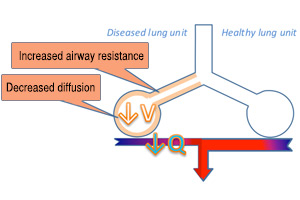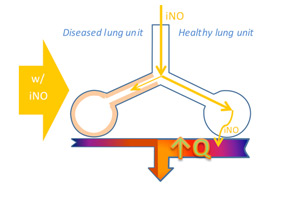Inhaled Nitric Oxide for Acute Hypoxemic Respiratory Failure Clinical Pathway — PICU
Nitric Oxide Basics
Why do we use it?
Nitric oxide is a small molecule (formula NO, molecular weight 30 daltons) with an extremely short half-life that is administered as an inhaled gas (often called iNO for ‘inhaled’ NO) at very small doses (parts per million). This gas is helpful in the management of pulmonary hypertension and refractory hypoxemia as it improves oxygenation.
Mechanism of Action
Nitric oxide is a naturally occurring molecule that can act as a potent vasodilator by its action on smooth muscle by activating guanylyl cyclase and increasing dephosphorylation of GTP to cyclic GMP. The cyclic GMP can cause smooth muscle relaxation by:
- Opening potassium channels and causing cell hyperpolarization
- Stimulating a cGMP dependent myosin phosphatase leading to dephosphorylation of myosin
- Blocking calcium entry into cells and decreasing intracellular calcium


The mechanism for treating hypoxemia is thought to be related to potentiating ventilation/perfusion (V/Q) matching by favoring perfusion of lung units with ventilation. By improving V/Q matching, there is improved blood oxygenation and therefore a decreased need for high levels of oxygen to maintain adequate arterial oxygenation.
Benefits
If NO improves V/Q and improves oxygenation, the reduction in FiO2 may help reduce lung injury that the patient sustains while being supported for their acute lung injury.